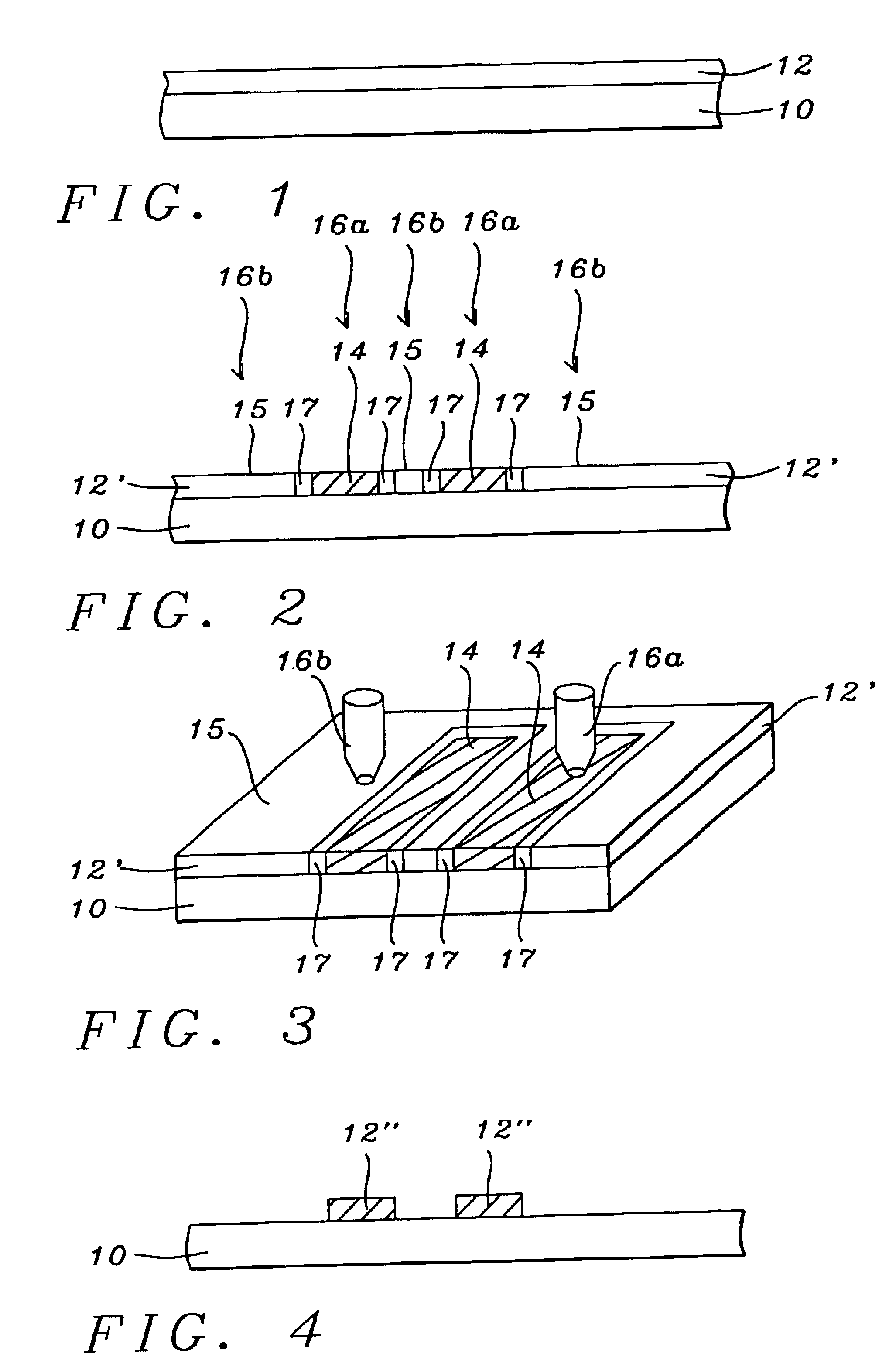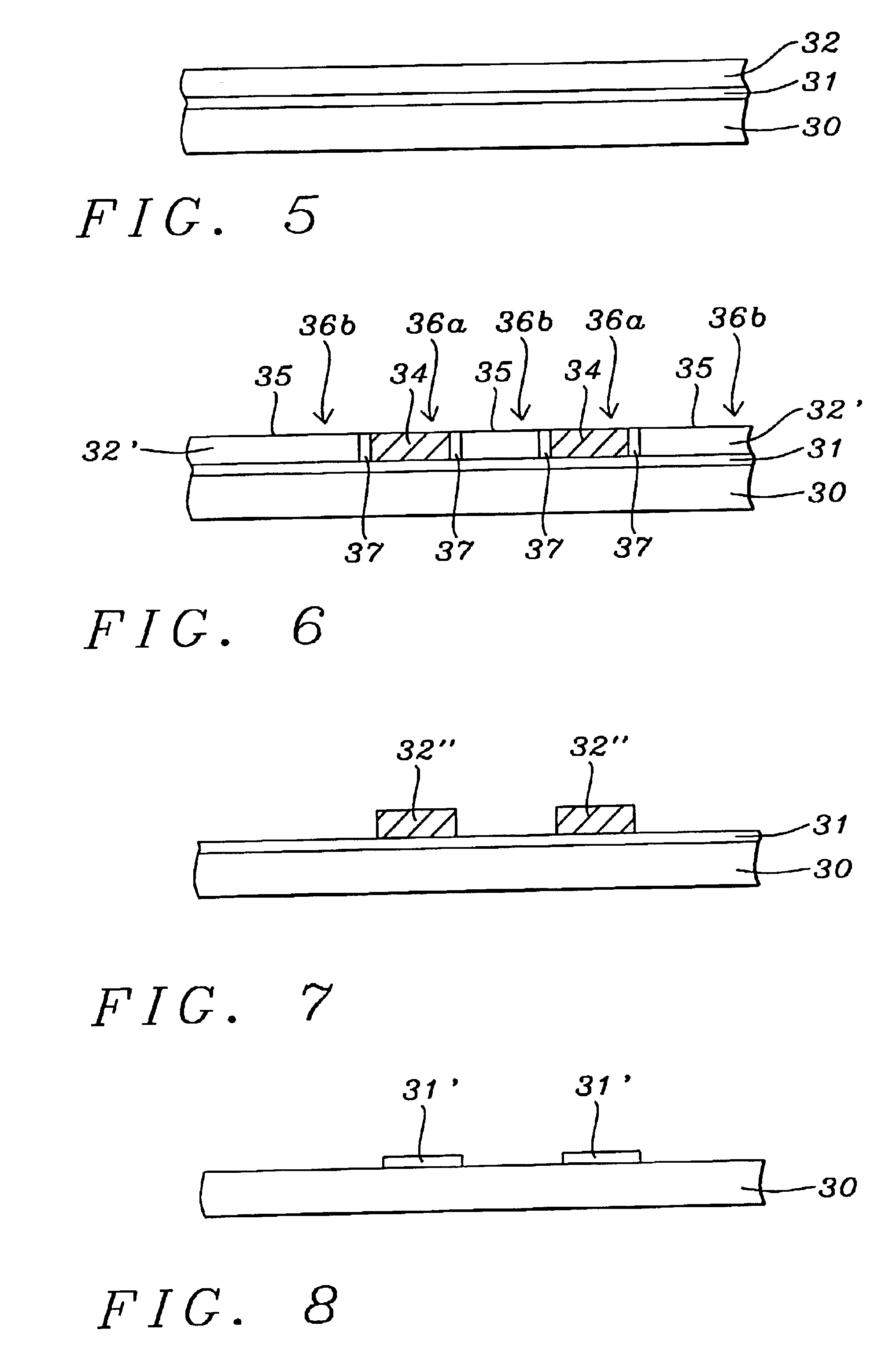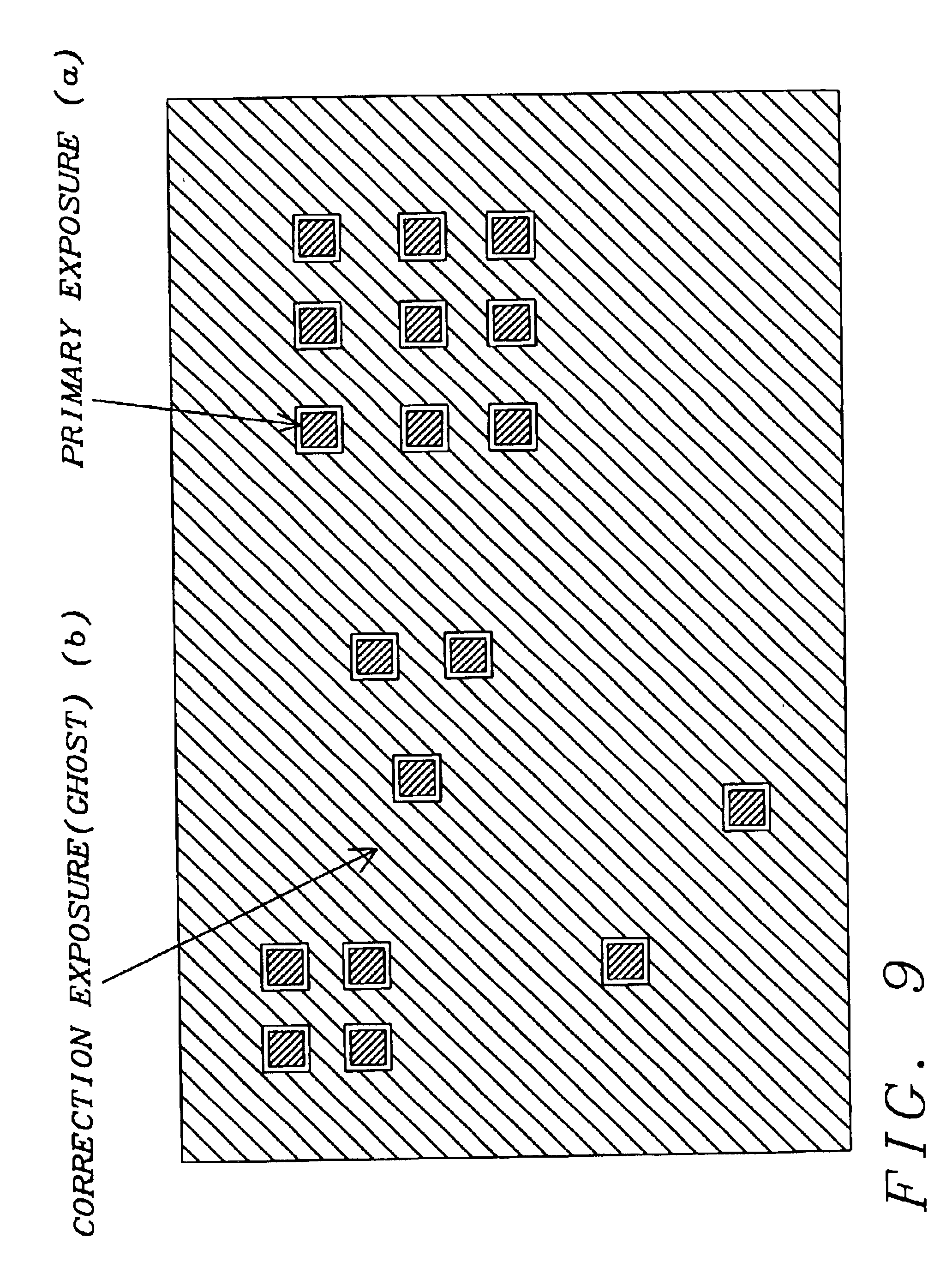Radiation correction method for electron beam lithography
a technology radiation correction method, which is applied in the direction of photomechanical treatment originals, photomechanical instruments, photomechanical apparatus, etc., can solve the problems of inconvenient operation, inconvenient operation, and inability to solve the problem of electron beam lithography radiation correction method, etc., and achieve the effect of being ready for commercialization
- Summary
- Abstract
- Description
- Claims
- Application Information
AI Technical Summary
Benefits of technology
Problems solved by technology
Method used
Image
Examples
first preferred embodiment
[0033]FIG. 1 to FIG. 5 are a series of schematic diagrams illustrating the results of forming upon a substrate a patterned resist layer by vector scan electron beam exposure with optimal proximity effect exposure dose correction and “ghost” pattern correction with a shaped focused beam FIGS. 1-2 and FIGS. 4-5 are schematic cross-sectional diagrams illustrating progressive stages in the fabrication of the patterned resist layer; FIG. 3 is a schematic plan view of the patterned resist layer corresponding to FIG. 2. FIG. 1 is a schematic cross-sectional diagram of the substrate at an early a stage in its fabrication in accord with a first preferred embodiment of the present invention.
[0034]Shown in FIG. 1 is a substrate 10 having formed thereupon a sensitive resist layer 12.
[0035]With respect to the substrate 10 shown in FIG. 1, the substrate 10 is formed employing material selected from the group consisting of microelectronics conductor materials, microelectronics semiconductor materi...
second preferred embodiment
[0042]Referring now more particularly to FIG. 5 to FIG. 8, FIG. 5 to FIG. 8 show a series of schematic cross-sectional diagrams illustrating the results of forming a patterned photomask employing electron beam lithography of an electron beam resist material with optimal correction for proximity effects due to electron back scattering into the resist layer. FIG. 5 is a schematic cross-sectional diagram of a photomask substrate at an early stage in its fabrication in accord with a more specific embodiment of the present invention which constituted a second preferred embodiment of the present invention. Shown in FIG. 5 is a photomask substrate 30 over which is formed an opaque layer 31 and a sensitive resist layer 32.
[0043]With respect to the photomask substrate 30 shown in FIG. 5, the photomask substrate 30 is analogous to the substrate 10 shown in FIG. 1 of the first embodiment of the present invention, and is formed of transparent material. Preferably the substrate 30 is formed of o...
PUM
| Property | Measurement | Unit |
|---|---|---|
| phase angle | aaaaa | aaaaa |
| phase angle | aaaaa | aaaaa |
| width | aaaaa | aaaaa |
Abstract
Description
Claims
Application Information
 Login to View More
Login to View More - R&D
- Intellectual Property
- Life Sciences
- Materials
- Tech Scout
- Unparalleled Data Quality
- Higher Quality Content
- 60% Fewer Hallucinations
Browse by: Latest US Patents, China's latest patents, Technical Efficacy Thesaurus, Application Domain, Technology Topic, Popular Technical Reports.
© 2025 PatSnap. All rights reserved.Legal|Privacy policy|Modern Slavery Act Transparency Statement|Sitemap|About US| Contact US: help@patsnap.com



